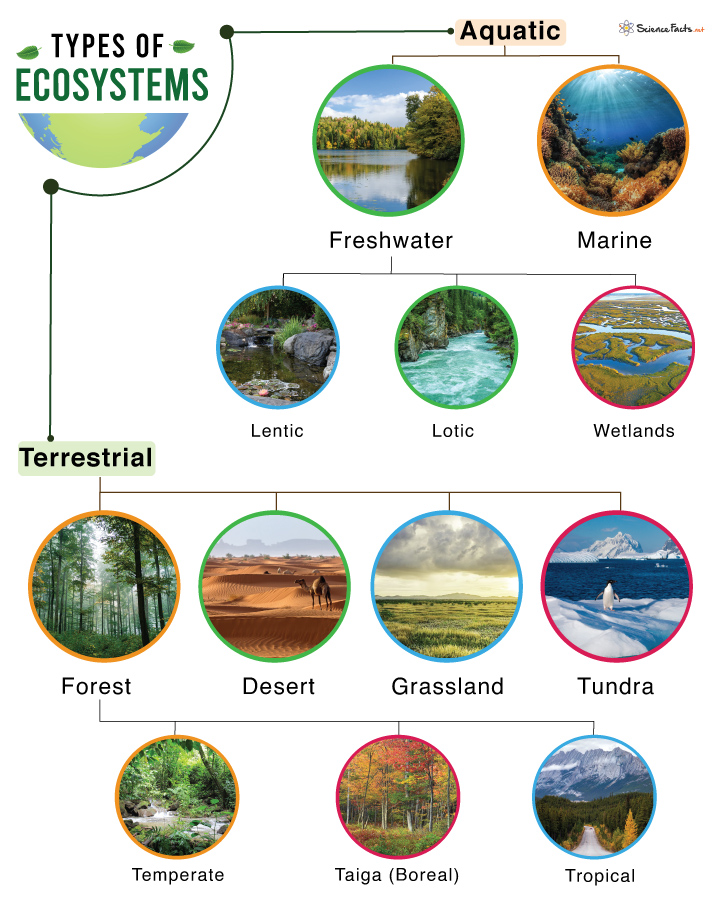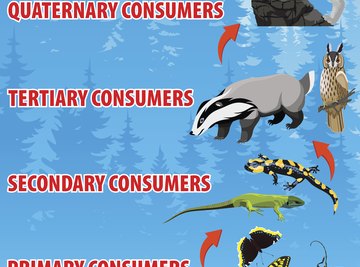Topic marine ecosystem types: Discover the vast wonders of marine ecosystem types, from vibrant coral reefs to mysterious deep-sea vents, each offering a unique underwater world waiting to be explored.
Table of Content
- What are the different types of marine ecosystems?
- Overview of Marine Ecosystems
- Coastal Ecosystems
- Open Ocean Ecosystems
- Deep Sea Ecosystems
- Coral Reefs
- Mangroves
- YOUTUBE: The Importance of Marine Ecosystems
- Estuaries and Salt Marshes
- Hydrothermal Vents
- Seagrass Meadows
- Kelp Forests
- Polar Marine Ecosystems
- Conservation and Threats
What are the different types of marine ecosystems?
There are several different types of marine ecosystems that exist worldwide. These ecosystems can be categorized based on their unique characteristics and the types of organisms that inhabit them. Here are some of the major marine ecosystem types:
- Open Ocean Ecosystem:
- Coastal Ecosystem:
- Coral Reef Ecosystem:
- Mangrove Ecosystem:
- Deep-Sea Ecosystem:
- Sandy Beach Ecosystem:
- Rocky Shore Ecosystem:
The open ocean is the vast expanse of seawater that extends from the coastline to the deep sea. It is characterized by its immense size, low nutrient levels, and diverse range of organisms such as plankton, fish, whales, and seabirds.
Coastal ecosystems include areas where the land meets the sea, such as estuaries, tidal marshes, and coral reefs. These ecosystems are highly productive and support a wide variety of plant and animal species, including mangroves, seagrasses, fish, crustaceans, and migratory birds.
Coral reefs are found in warm, shallow waters and are home to an incredible biodiversity of marine life. These ecosystems are built by coral polyps and provide habitats for a wide range of organisms, including fish, crustaceans, mollusks, and various types of coral.
Mangroves are trees and shrubs that grow in the intertidal zones of coastal areas. They form unique ecosystems that provide critical habitats for numerous species of fish, birds, and reptiles. Mangrove forests also serve as important nurseries and protect coastlines from erosion.
The deep-sea ecosystem encompasses the regions of the ocean that lie below the surface and sunlight penetration. This includes the abyssal plain, the continental slope, and deep-sea trenches. It is characterized by extreme conditions, such as high pressure, low temperatures, and darkness. Deep-sea ecosystems are inhabited by specialized organisms adapted to these harsh environments.
Sandy beaches are dynamic ecosystems that exist along the coastlines and are constantly shaped by waves and tides. They provide habitat for a variety of organisms, including burrowing animals, beach grasses, and shorebirds.
Rocky shores are areas where solid rocks are exposed along the shoreline. These ecosystems are highly diverse and provide attachment surfaces for a variety of algae, seaweeds, mollusks, crustaceans, and other intertidal species.
These are just a few examples of the different types of marine ecosystems that exist worldwide. Each ecosystem plays a vital role in maintaining the health and balance of the marine environment and supports a wide range of life forms.
READ MORE:
Overview of Marine Ecosystems
Marine ecosystems cover over 70% of the Earth"s surface and are vital for the health of our planet. These diverse habitats range from the shallow, sunlit waters of coral reefs to the dark depths of the ocean floor. Marine ecosystems are categorized based on their environment and the life they support, offering a unique blend of physical and biological characteristics that sustain a vast array of marine life.
- Coastal Ecosystems: These areas are the ocean"s most productive and biologically diverse regions, including estuaries, mangroves, and coral reefs.
- Open Ocean Ecosystems: The largest area of the marine ecosystem, characterized by its deep waters, vast horizons, and pelagic life.
- Deep Sea Ecosystems: Known for their extreme conditions, these ecosystems are home to unique species adapted to life in high pressure, low light, and cold temperatures.
- Polar Marine Ecosystems: Found in the Arctic and Antarctic, these ecosystems are shaped by the presence of sea ice and host species well-adapted to cold environments.
Each type of marine ecosystem plays a crucial role in global processes, including climate regulation, oxygen production, and the carbon cycle. Understanding these ecosystems is key to conserving marine biodiversity and ensuring the health of our planet.
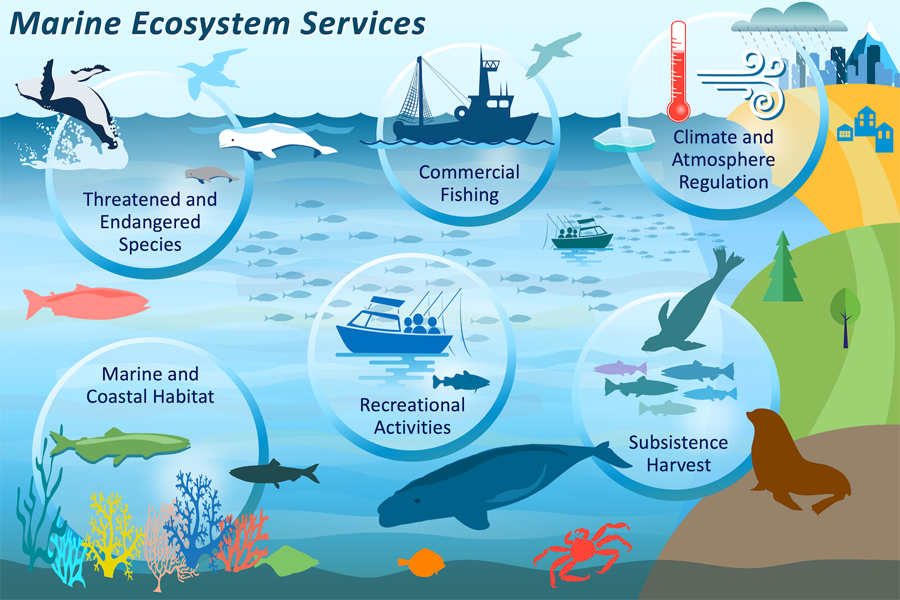
Coastal Ecosystems
Coastal ecosystems are dynamic interfaces between the land and sea, characterized by their rich biodiversity and productivity. They serve as crucial habitats for numerous species and act as natural buffers, protecting coastlines from erosion and extreme weather events. These ecosystems support a variety of life forms and are essential for the livelihoods of millions of people worldwide.
- Mangroves: These are tropical forests that thrive in saltwater along coastlines, providing nursery grounds for fish and protection against storm surges.
- Coral Reefs: Often referred to as the "rainforests of the sea," coral reefs are home to a quarter of all marine species and are vital for marine biodiversity.
- Estuaries: Where freshwater from rivers meets and mixes with saltwater from the sea, creating nutrient-rich environments that support diverse communities of birds, fish, and other wildlife.
- Salt Marshes: These are coastal wetlands that are flooded and drained by salt water brought in by the tides, serving as important filters for pollutants and providing habitat for migratory bird species.
- Seagrass Meadows: Vital underwater habitats that provide food, shelter, and nursery grounds for a variety of marine life, including fish, sea turtles, and dugongs.
Coastal ecosystems are not only hotspots for biodiversity but also key to combating climate change through carbon sequestration. Their conservation is vital for maintaining marine health, supporting fisheries, and protecting coastal communities.
Open Ocean Ecosystems
The open ocean, or pelagic zone, is the largest marine ecosystem, covering over two-thirds of the Earth"s surface. This vast, deep blue world is characterized by its depth and distance from the shore, hosting a wide range of habitats from the sunlit upper layers down to the dark abyssal plains. The open ocean is crucial for the global climate and ecosystem health, supporting an incredible diversity of life.
- Epipelagic Zone: Also known as the sunlight zone, this is where most of the visible light penetrates and photosynthesis can occur, supporting a wide array of plankton, fish, and large marine mammals.
- Mesopelagic Zone: The twilight zone receives only faint light and is home to bioluminescent organisms, deep-sea fish, and squid.
- Bathypelagic Zone: The midnight zone, devoid of light, supports life adapted to extreme pressure and cold, including anglerfish and gulper eels.
- Abyssopelagic and Hadalpelagic Zones: These are the deepest parts of the ocean, hosting unique life forms adapted to the harshest conditions on Earth.
The open ocean plays a pivotal role in the Earth"s climate system and biogeochemical cycles by regulating temperature and supporting the marine food chain. Its vast expanses are critical for marine species" migration, feeding, and breeding, highlighting the importance of conservation efforts to protect this vast and mysterious ecosystem.
:max_bytes(150000):strip_icc()/animals-coral-corals-2289415-21e896399de642ddbdd9057e9429ddb5.jpg)
Deep Sea Ecosystems
Deep sea ecosystems, located beyond the continental shelves, are among the most mysterious habitats on Earth. These areas are characterized by extreme conditions such as complete darkness, high pressure, and cold temperatures. Despite these harsh environments, deep sea ecosystems are home to a diverse array of life forms that have adapted in remarkable ways to survive in such depths.
- Hydrothermal Vents: These are underwater geysers that release mineral-rich water heated by volcanic activity. They support unique communities that thrive in complete darkness, relying on chemosynthesis rather than photosynthesis.
- Cold Seeps: Areas where hydrocarbon-rich fluid leaks from the Earth"s crust, supporting ecosystems similar to hydrothermal vents with mussels, tube worms, and other specialized species.
- Abyssal Plains: These are vast, flat, sediment-covered areas of the ocean floor, home to a variety of life forms such as sea cucumbers, sponges, and deep-sea fish.
- Hadal Zones: The deepest parts of the ocean, found in oceanic trenches, host unique species adapted to the most extreme pressures and darkness.
Deep sea ecosystems play a crucial role in nutrient cycling and carbon sequestration, helping to regulate the Earth"s climate. The exploration and study of these remote habitats continue to reveal the incredible adaptability and diversity of life in the deep ocean.
Coral Reefs
Coral reefs, often referred to as the rainforests of the sea, are one of the most biologically diverse and vibrant ecosystems on Earth. These underwater structures are built by coral polyps that live in mutualistic relationships with algae. The algae provide the corals with food through photosynthesis, while the corals provide protection and the compounds necessary for photosynthesis. Coral reefs support an incredible variety of marine life, offering food, shelter, and breeding grounds for thousands of species of fish, invertebrates, and other marine organisms.
- Types of Coral Reefs: Fringing reefs, barrier reefs, and atolls are the three main types, each forming in different conditions and locations around the world.
- Biodiversity Hotspots: Coral reefs are home to over a quarter of all marine species, including fish, mollusks, echinoderms, sponges, and more.
- Ecosystem Services: Besides biodiversity, reefs protect coastlines from erosion, support fisheries, and contribute to local economies through tourism.
- Threats: Coral reefs are facing unprecedented threats from climate change, ocean acidification, pollution, overfishing, and destructive fishing practices.
- Conservation Efforts: Protecting coral reefs involves global and local actions, including reducing greenhouse gas emissions, establishing marine protected areas, and promoting sustainable fishing practices.
The health of coral reefs is essential for marine biodiversity and the well-being of millions of people who rely on them for food, income, and protection against storms. Conservation and sustainable management are crucial to ensure their survival for future generations.
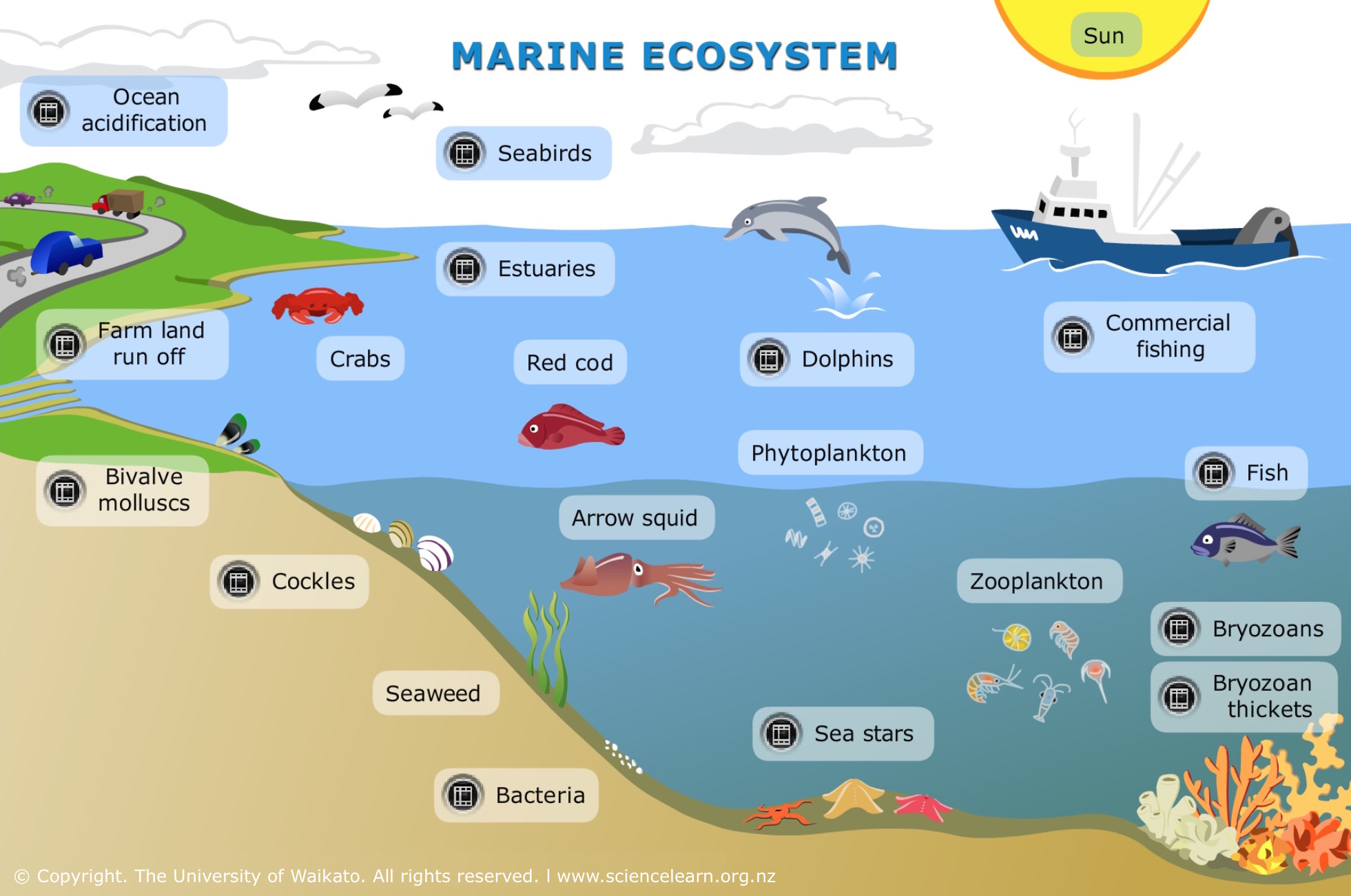
Mangroves
Mangroves are unique coastal ecosystems located at the interface between land and sea in tropical and subtropical regions. These tidal habitats are characterized by salt-tolerant trees and shrubs that have adapted to life in harsh coastal conditions. Mangroves play a critical role in coastal protection, sediment stabilization, carbon sequestration, and supporting biodiversity. They serve as nurseries for many marine species, including fish and crustaceans, which are vital for commercial and subsistence fishing.
- Adaptations: Mangrove roots are specially adapted to cope with saltwater immersion, oxygen deprivation, and fluctuating tides, showcasing remarkable evolutionary strategies for survival.
- Biodiversity: These ecosystems are teeming with life, hosting a variety of species from fish to birds, and serving as crucial breeding grounds.
- Ecosystem Services: Mangroves protect shorelines from erosion and storm surges, filter pollutants, and are one of the most carbon-rich forests in the tropics.
- Threats: Despite their importance, mangroves are among the world’s most threatened ecosystems, facing pressures from land development, aquaculture, and climate change.
- Conservation: Efforts to conserve and restore mangrove ecosystems are crucial for maintaining their biodiversity, protecting coastal communities, and fighting climate change.
The resilience and ecological services of mangroves underscore their significance not only to marine life but also to human communities that depend on them for livelihoods, coastal defense, and environmental health.
The Importance of Marine Ecosystems
Importance: Discover the true significance and value of this crucial topic! Dive deep into the importance of (keyword) in this eye-opening video that is sure to leave you feeling inspired and motivated.
Different Types of Ecosystems and Their Definitions
Definitions: Confused about what (keyword) really means? Look no further! This insightful video provides clear and concise definitions, ensuring that you fully understand the concept and can apply it with confidence.
Estuaries and Salt Marshes
Estuaries and salt marshes are among the most productive ecosystems on Earth, located where rivers meet the sea. These transitional habitats blend fresh and saltwater, creating a unique environment that supports diverse plant and animal communities. Estuaries serve as vital nurseries for many marine species, while salt marshes provide critical habitat for birds, fish, and invertebrates. Both play significant roles in nutrient cycling, water filtration, and flood protection.
- Biological Importance: These areas are teeming with life, offering shelter and breeding grounds for numerous species, including many commercially important fish and shellfish.
- Ecosystem Services: They act as buffers, protecting inland areas from storm surges and erosion, and are crucial for water purification and sediment capture.
- Carbon Sequestration: Both estuaries and salt marshes are effective carbon sinks, playing a significant role in mitigating climate change.
- Threats: Despite their importance, these ecosystems face threats from coastal development, pollution, and sea-level rise, making their conservation a priority.
- Conservation Efforts: Protecting and restoring estuaries and salt marshes are essential for maintaining biodiversity, enhancing resilience to climate change, and supporting local economies.
The health and productivity of estuaries and salt marshes are indispensable for marine life, bird populations, and human communities alike. Their preservation ensures the continued provision of valuable ecosystem services and biodiversity conservation.

Hydrothermal Vents
Hydrothermal vents are fascinating underwater geysers found on the ocean floor, particularly along mid-ocean ridges. These vents eject superheated, mineral-rich water into the cold, deep sea environment, creating unique ecosystems that operate independently of sunlight. Life around hydrothermal vents thrives on chemosynthesis, a process where bacteria convert chemical nutrients into organic energy, supporting a diverse community of organisms adapted to extreme conditions.
- Unique Biodiversity: Vents host specialized species such as tube worms, clams, and unique microbial communities that are not found anywhere else on Earth.
- Chemosynthesis: The base of the food chain at these vents, chemosynthesis allows life to flourish in the absence of sunlight, showcasing the adaptability of life.
- Geological Significance: Hydrothermal vents play a crucial role in the Earth"s geology, contributing to the formation of mineral deposits and the regulation of ocean chemistry.
- Research and Discovery: These ecosystems are hotspots for scientific research, offering insights into life"s adaptability and the potential for life in extraterrestrial environments.
- Conservation Challenges: Despite their depth and remoteness, hydrothermal vent ecosystems face threats from deep-sea mining and climate change, necessitating targeted conservation efforts.
The discovery of hydrothermal vents has significantly expanded our understanding of life"s potential habitats, emphasizing the incredible resilience and diversity of marine life in one of the Earth"s most extreme environments.
Seagrass Meadows
Seagrass meadows are vital underwater ecosystems found in shallow, sheltered marine areas around the world. These meadows are composed of flowering plants that form dense underwater beds, providing important habitats for a wide range of marine life. Seagrass meadows are highly productive and offer critical services, including sediment stabilization, water quality improvement, and carbon sequestration. They serve as nurseries for many species of fish and invertebrates, crucial feeding grounds for marine creatures like dugongs and sea turtles, and offer protection against coastal erosion.
- Biological Importance: Seagrass beds are biodiversity hotspots that support complex food webs, including a variety of fish, shellfish, and marine mammals.
- Carbon Storage: Known as "blue carbon" habitats, seagrass meadows are efficient at capturing and storing carbon dioxide, playing a significant role in climate change mitigation.
- Ecosystem Services: They filter particulates from the water, improving water clarity and quality, and protect shorelines from erosion by stabilizing the sea bed.
- Threats: Seagrass meadows face numerous threats, including coastal development, pollution, climate change, and damage from boat anchors and fishing gear.
- Conservation Efforts: Protecting and restoring seagrass meadows is essential for maintaining marine biodiversity, enhancing fisheries, and combating climate change.
The conservation of seagrass meadows is crucial for the health of marine ecosystems, the protection of coastal communities, and the fight against global warming, highlighting the need for increased awareness and action to preserve these underwater treasures.

Kelp Forests
Kelp forests are underwater ecosystems characterized by their dense growths of kelp, a type of large, fast-growing seaweed. These forests thrive in cool, nutrient-rich waters, primarily along coastlines in the Northern and Southern Hemispheres. Kelp forests provide a three-dimensional habitat for a diverse array of marine species, from invertebrates to fish and marine mammals. They are known for their high productivity and biodiversity, comparable to that of tropical rainforests.
- Ecosystem Engineers: Kelp acts as an ecosystem engineer, creating and modifying habitats for various marine organisms.
- Biodiversity: These forests support a wide range of marine life, including numerous species of fish, crustaceans, and marine mammals.
- Carbon Sequestration: Kelp forests play a significant role in carbon capture and storage, helping to mitigate the effects of climate change.
- Economic Value: They contribute to the economy by supporting fisheries and tourism industries.
- Threats: Kelp forests are threatened by climate change, pollution, overfishing, and habitat destruction.
- Conservation: Efforts to protect and restore kelp forests are critical for maintaining marine biodiversity, supporting fisheries, and ensuring the health of coastal ecosystems.
The preservation of kelp forests is essential for sustaining marine biodiversity, protecting coastal resources, and fighting against climate change. Their management and conservation require coordinated efforts to address the challenges they face.
Polar Marine Ecosystems
Polar marine ecosystems, found in the Arctic and Antarctic regions, are unique environments that operate under extreme conditions of cold, ice, and seasonal darkness. Despite these harsh conditions, they are rich in biodiversity and play a crucial role in global climate regulation and marine food webs. These ecosystems support a range of specially adapted species from microscopic phytoplankton to large mammals like seals, whales, and penguins.
- Ice-Dependent Species: Many organisms rely on sea ice as a platform for breeding, feeding, and protection from predators.
- Krill: A cornerstone species, krill are a vital food source for many marine animals and play a key role in the Antarctic food web.
- Unique Adaptations: Polar marine species have evolved unique adaptations to survive in cold waters, including antifreeze proteins and specialized feeding strategies.
- Climate Change Impacts: Warming temperatures and decreasing sea ice pose significant threats to polar ecosystems, affecting species distribution and abundance.
- Conservation Efforts: Protecting these ecosystems is crucial for preserving biodiversity, regulating the Earth"s climate, and sustaining indigenous communities.
The preservation of polar marine ecosystems is essential for understanding global climate patterns, protecting unique wildlife, and maintaining the health of the world"s oceans. Efforts to mitigate climate change and protect these habitats are critical for their survival.
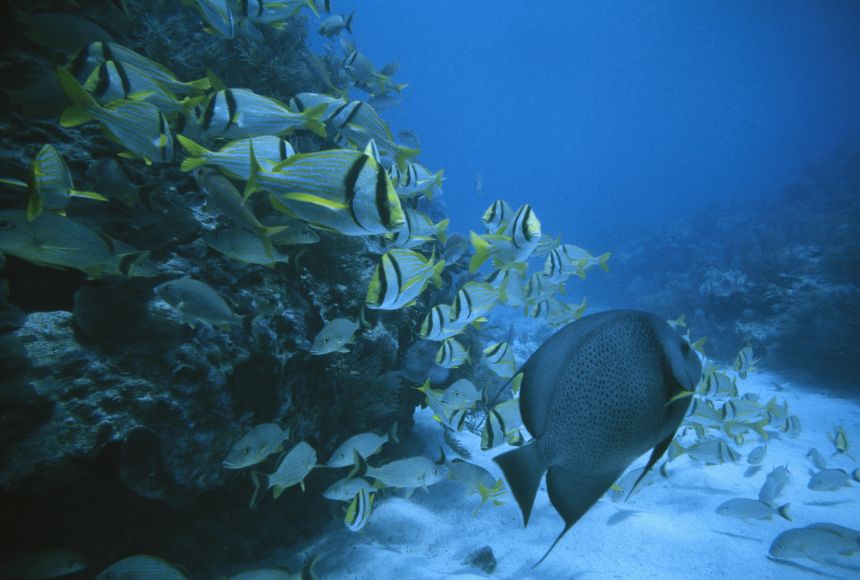
READ MORE:
Conservation and Threats
Marine ecosystems face a myriad of threats that jeopardize their health, biodiversity, and the services they provide to humanity. Climate change, pollution, overfishing, and habitat destruction are among the most pressing challenges. Conservation efforts are crucial to safeguard these vital ecosystems for future generations. By addressing these threats and promoting sustainable practices, we can ensure the resilience and continued prosperity of marine environments.
- Climate Change: Rising temperatures and ocean acidification affect marine life and habitats, disrupting food webs and bleaching coral reefs.
- Pollution: Plastic waste, oil spills, and chemical runoff harm marine species and ecosystems, leading to loss of biodiversity and habitat degradation.
- Overfishing: Unsustainable fishing practices deplete fish stocks, threaten marine species, and disrupt ecological balance.
- Habitat Destruction: Coastal development, aquaculture, and destructive fishing practices destroy crucial habitats like mangroves, seagrass beds, and coral reefs.
- Conservation Strategies: Establishing marine protected areas, promoting sustainable fishing, reducing pollution, and addressing climate change are key to protecting marine ecosystems.
- Global and Local Actions: Combining global agreements with local conservation efforts can effectively address the multifaceted threats to marine ecosystems.
Protecting marine ecosystems requires a concerted effort from governments, NGOs, communities, and individuals. Through research, education, and policy change, we can mitigate threats and preserve the ocean"s biodiversity and productivity for the well-being of all life on Earth.
Exploring the diverse marine ecosystem types reveals the ocean"s vital role in sustaining life on Earth. By understanding and protecting these ecosystems, we can ensure a rich, vibrant future for our planet"s marine biodiversity.
